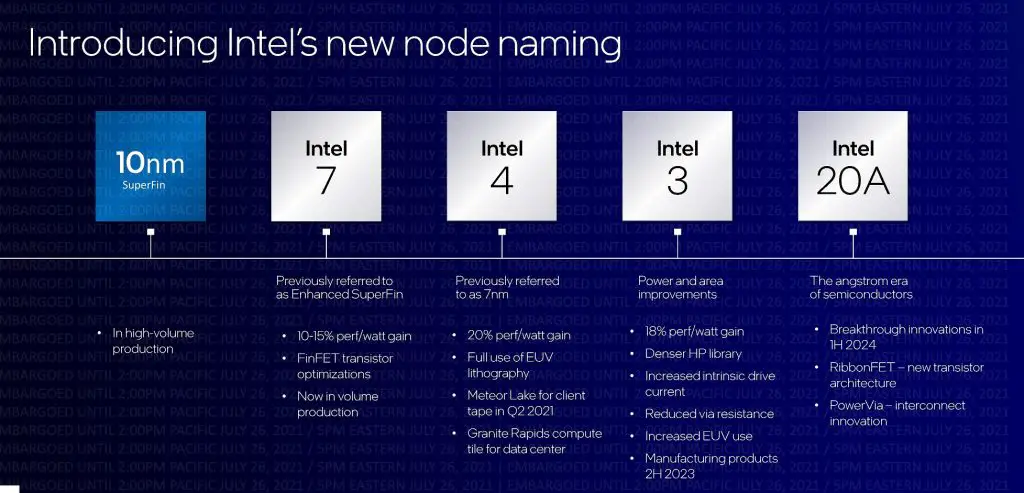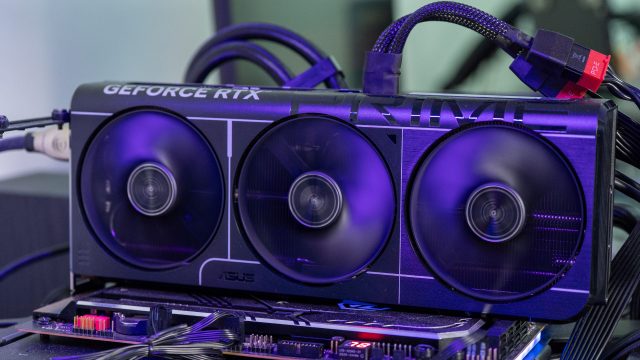With Intel closed up its ‘Intel Aceelerated’ virtual keynote a couple of hours ago, among its lists of newly announced plans for moving towards the future, what surprised most people is the act of renaming its process node.
As most of you would be familiar with the naming scheme of Intel’s process node usually revolve around “adding plus signs to the back” for signifying minor upgrades towards pre-existing process node technology (Yes you, 14nm), the method can be pretty taxing to the brain and memory to be properly memorized or even strike a recognizable impression at first glance so by applying an easy to understand numbering scheme that, presumably, matches how TSMC name its own, consumers will be having an easier time to understand them.
While the current 10nm SuperFin that was used to build the 11th Gen Core Tiger Lake CPUs will stay as it is, the renaming will be including the Enhanced SuperFin and 7nm that was announced in the past year which makes them into the Intel 7 and Intel 4 process node. For a quick refresh, Intel 7 is still 10nm in technical terms but has been applied with optimizations that make the FinFET transistor perform at a higher rate of efficiency where it serves as the architecture for the upcoming 12th Gen Core Alder Lake CPUs while the Intel 4 make use of EUV lithography to print ultra-small features with 7nm transistors that provide an approximately 20% performance-per-watt increase is slated for 2H 2022 and 1H 2023.
Moving forward towards 2H 2023, Intel 3 will be moving in and take over Intel 4 with essentially the core FinFET architecture being untouched to improve upon other parameters to deliver yet another 18% performance gain over its predecessor through the implementation of denser and higher performance library, better intrinsic drive current and optimized interconnect metal stack for reduced resistance and larger scale of EUV utilization. After Intel 3, the process node will officially enter the era of “A” or Angstrom with Intel 20A through the brand new RibbonFET and PowerVia technology with the former being an all-new transistor architecture capable of delivering faster transistor switching speeds with the same current drive in a smaller footprint while the latter being a special backside power delivery methodology that eliminates the need to route power to the front side of the wafer for improved efficiency. The Intel 20A process node is expected to ramp up starting 2024 so it is possible to get an Angstrom-scale Intel product announced at the very next year. Intel is also confident that the expected successor Intel 18A will start its development cycle in early 2025 to deliver yet another major performance jump.
With a clear road ahead of what to do and expect from Intel, the brand is basically aiming for a “yearly” release of new products equipped with increasing better technology to not only tackle the constant pressure from its decade-old rival AMD but also by rising stars such as ARM-based chips that tout extreme efficiency over traditional x86 computing.












